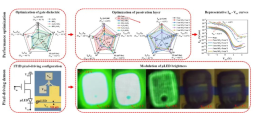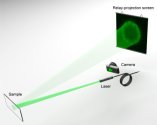Looks like some consolidation in China IC industry..
Goodix Technologies issued an announcement stating that it has terminated the acquisition of Yunying Valley.
Shenzhen Goodix Technology Co., Ltd. held the fifth meeting of the fifth board of directors and the fifth meeting of the fifth board of supervisors on March 3, 2025, and reviewed and approved the "Proposal on Termination of Issuance of Shares and Payment of Cash to Purchase Assets and Raise Matching Funds", agreeing that the company will terminate the issuance of shares and payment of cash to purchase assets and raise matching funds, and authorize the company's management to handle matters related to this termination. The relevant matters are now announced as follows:
The company intends to purchase 100% of the shares of Yunyinggu Technology Co., Ltd. by issuing shares and paying cash. At the same time, the company intends to issue shares to raise supporting funds (hereinafter referred to as the "Transaction"). This transaction is not expected to constitute a major asset reorganization as stipulated in the "Management Measures for Major Asset Restructuring of Listed Companies", but it involves issuing shares to purchase assets. This transaction will not result in a change in the actual controller of the company.
New Micro acquires Aixisheng
Shanghai Xinxiang Microelectronics Co., Ltd. issued an announcement stating that the Company is planning to purchase the controlling rights of Shenzhen Aixisheng Technology Co., Ltd. by issuing shares and paying cash and raising supporting funds at the same time (hereinafter referred to as the "Transaction"). After preliminary communication between the Company and relevant parties, the Transaction is initially expected to constitute a major asset reorganization. Before this transaction, the Company had no affiliated relationship with the counterparty, and this transaction will not lead to a change in the actual controller of the Company and does not constitute a reorganization listing.
Ingenic, acquires Fimmicro
At the same time, Shenzhen Yingjixin Technology Co., Ltd.issued an announcement stating that the Company is planning to pay cash and issue targeted convertible corporate bonds to purchase the controlling interest of Shenzhen Huimang Microelectronics Co., Ltd.
Goodix Technologies issued an announcement stating that it has terminated the acquisition of Yunying Valley.
Shenzhen Goodix Technology Co., Ltd. held the fifth meeting of the fifth board of directors and the fifth meeting of the fifth board of supervisors on March 3, 2025, and reviewed and approved the "Proposal on Termination of Issuance of Shares and Payment of Cash to Purchase Assets and Raise Matching Funds", agreeing that the company will terminate the issuance of shares and payment of cash to purchase assets and raise matching funds, and authorize the company's management to handle matters related to this termination. The relevant matters are now announced as follows:
The company intends to purchase 100% of the shares of Yunyinggu Technology Co., Ltd. by issuing shares and paying cash. At the same time, the company intends to issue shares to raise supporting funds (hereinafter referred to as the "Transaction"). This transaction is not expected to constitute a major asset reorganization as stipulated in the "Management Measures for Major Asset Restructuring of Listed Companies", but it involves issuing shares to purchase assets. This transaction will not result in a change in the actual controller of the company.
New Micro acquires Aixisheng
Shanghai Xinxiang Microelectronics Co., Ltd. issued an announcement stating that the Company is planning to purchase the controlling rights of Shenzhen Aixisheng Technology Co., Ltd. by issuing shares and paying cash and raising supporting funds at the same time (hereinafter referred to as the "Transaction"). After preliminary communication between the Company and relevant parties, the Transaction is initially expected to constitute a major asset reorganization. Before this transaction, the Company had no affiliated relationship with the counterparty, and this transaction will not lead to a change in the actual controller of the Company and does not constitute a reorganization listing.
Ingenic, acquires Fimmicro
At the same time, Shenzhen Yingjixin Technology Co., Ltd.issued an announcement stating that the Company is planning to pay cash and issue targeted convertible corporate bonds to purchase the controlling interest of Shenzhen Huimang Microelectronics Co., Ltd.








